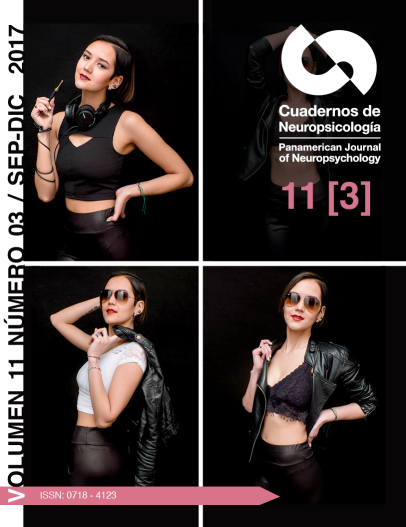Dyslexia: how it survived (or not) to classification alterations all over the years? Implications to assessment and intervention
Abstract
Abstract
In this paper, we will approach definitions of dyslexia along history and their importance to comprehend this learning disorder. A lot of small criteria were changed in the last decades and this obeyed all clinicians, professors, or other person dealing with dyslexic people, helping to adapt to a new view of this problem. We have paid particular attention, not only to the actual and update models of classification for this dysfunction, but also to the implications of effective interventions to these patients. We also show some of the difficulties in achieving a classification agreement and why it is needed that everyone working on this field should have it in mind in order to standardize a language that could help to develop more appropriated models of assessment and intervention, particularly in order to fill the gap between the clinical field and the educational reality.
Keywords: Dyslexia; Specific Learning Disorders; DSM; International Statistical Classification of Diseases and Related Health Problems; International statistical classification of diseases; injuries; and causes of death
Â
Resumen
En este artÃculo se propone abordar históricamente la definición de la dislexia para mostrar su importancia en la comprensión de este especÃfico trastorno de aprendizaje. Muchos criterios cambiaron en las últimas décadas, lo cual obligó a los médicos, profesores, y a otras personas que enfrentan este tipo de casos, a adaptarse a una nueva visión de este problema. Se ha prestado especial atención no sólo a los modelos actuales de clasificación de esta disfunción, sino también a las implicaciones de las intervenciones eficaces en este tipo de pacientes. También se muestran algunas de las dificultades para lograr un acuerdo en la clasificación y por qué es necesario que todos los que trabajan en este campo las tengan en cuenta, para poder estandarizar un lenguaje que permita desarrollar modelos de evaluación e intervención más apropiados y lograr asà cerrar la brecha entre el campo clÃnico y la realidad educativa.
Palabras clave: Dislexia; Trastornos de aprendizaje; Clasificación; Intervención; DSM.
Â
Resumo
Neste artigo abordaremos a definição de dislexia ao longo da história e sua importância para a compreensão deste transtorno de aprendizagem especÃfico. Muitos dos critérios foram alterados nas últimas décadas e obrigaram a todos os clÃnicos, professores ou outras pessoas que lidavam com pessoas disléxicas a se adaptar a uma nova visão desse problema. Prestamos especial atenção não apenas aos modelos atuais e atualizados de classificação para esta disfunção, mas também à s implicações de intervenções efetivas sobre esses tipos de pacientes. Mostramos também algumas das dificuldades em alcançar um acordo de classificação e por que é, assim, necessário, que todos os que trabalham neste campo tenham em mente a padronização de uma linguagem que possa ajudar a desenvolver modelos de avaliação e intervenção mais apropriados, particularmente para preencher a lacuna entre o campo clÃnico e a realidade educacional.
Palavras-chave: Dislexia; Distúrbios EspecÃficos de Aprendizagem; Manual Diagnóstico e EstatÃstico de Transtornos Mentais; Classificação EstatÃstica Internacional de Doenças e Problemas de Saúde Relacionados; Classificação EstatÃstica Internacional de Doenças; Lesões e Causas de Morte.
Downloads
How to Cite
Issue
Section
License
Articles published in this journal are protected under the Creative Commons Attribution-NonCommercial-ShareAlike 4.0 International (CC BY-NC-SA 4.0) license. This means that authors retain full rights over their research and publications at all times. As a journal, we fully respect and promote the principles of open access established by this license, allowing the work to be shared, adapted, and distributed for non-commercial purposes, provided that appropriate credit is given to the authors and any derivative works are licensed under the same terms.
Authors are responsible for obtaining the required permission when they wish to reproduce part of the material (figures, etc.) from other publications.
Likewise, CNPs allows authors to host in their personal sites or other repositories that they deem convenient the Final and Definitive Version of the published article with the format assigned by the journal. In no case do we allow access to preprints of the article under evaluation or already published.
When submitting an article to CNPs you are aware that all the contents of CNPs are under a Creative Commons License. In which it is allowed to copy and share the contents freely, always making reference to the origin of the publication and its author.





